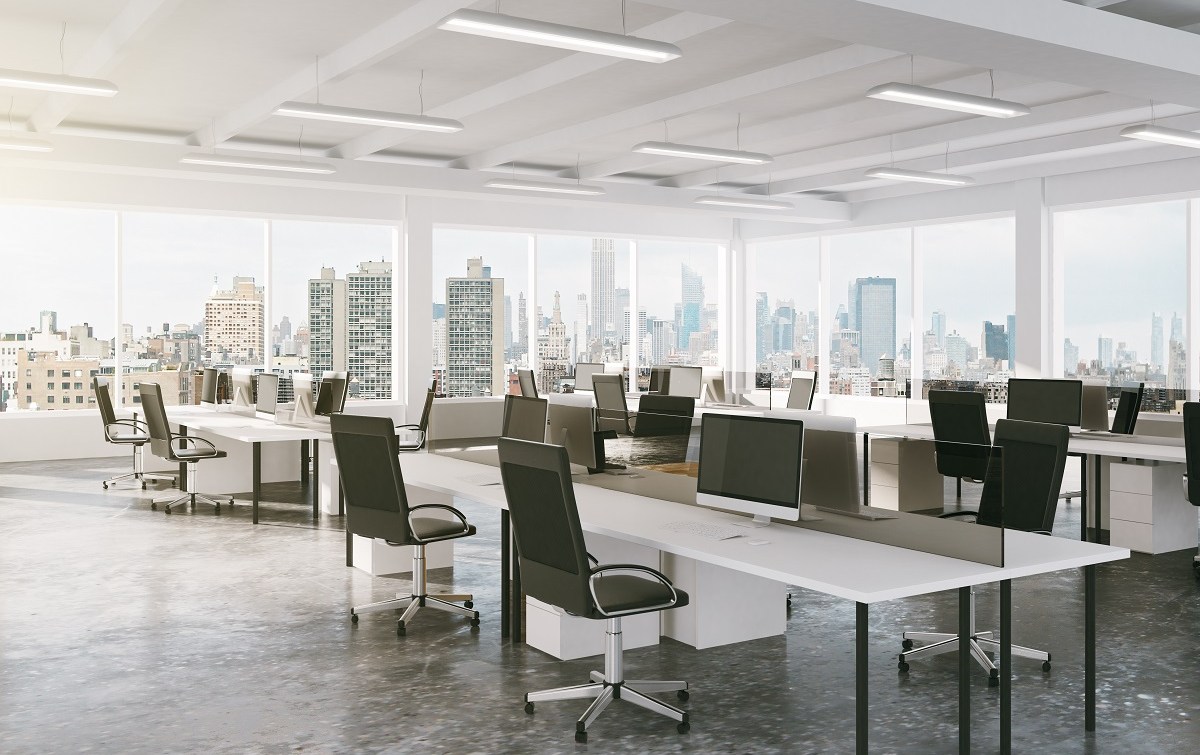Locating office space for lease involves much more than just searching the web for available listings, driving around town looking for vacant office space, and finding bargains on monthly rent.
Because office space leases are much more complex than they seem, a ‘good deal’ can quickly turn into an expensive nightmare.
It’s always easier to do things correctly right from the start than to try and fix problems after the fact. With that in mind, here are five things to consider about leasing office space before signing on the dotted line.
1. Does the space reflect the business image?
Perception often becomes reality, so it’s important to make sure that the office space matches the image of the business.
Professional services firms with white-collar employees in the legal, finance, or accounting business sectors might select traditional Class A office space. Companies specializing in social media marketing, web programming and design, or counseling may find that office space in a trendy warehouse-loft conversion is a better match for their business image.
Other image factors to consider when leasing office space include:
- Parking and mass transit availability;
- Demographics of the surrounding neighborhood;
- Amenities such as restaurants and coffee shops, health clubs, and retailers;
- Centralized location for ease of employee commutes and customer access.
2. How much office space do you really need?
Because an office space lease normally runs several years in length, it’s important to consider the needs of the business both now and in the future.
Office floor plan configurations can include traditional private offices, reception area, common areas for employees and conference rooms, hallways and storage space. Other companies choose an open-office floor plan to better match their business image and encourage employee interaction and collaboration.
BOMA (the Building Owners and Managers Association International) can be an excellent resource for determining the right amount of space for a company’s specific needs.
In general, architects and professional interior designers suggest about 150 square feet of space for each employee in an office. Dedicated offices for executives average 200 square feet, while staff space averages about 150 square feet per employee.
Open floor plans allow for a more efficient use of space, with around 80 square feet per employee recommended for each work area.
As a business grows its need for office space grows as well. Unless that expansion will happen in the immediate future, it usually doesn’t make sense to pay for office space that is going to sit vacant for an extended length of time.
In order to allow a business to expand when the time is right, the following three terms can be added to an office space lease:
- First right of refusal on adjacent office space;
- Right of first refusal for larger space in the same building;
- Right to sublease the existing office space to a different tenant.
3. Which type of office space lease should you sign?
Unlike residential real estate, where lease terms are usually the same, every office space lease is a little different.
Although rental rates and terms and conditions of a commercial lease are typically customized from one tenant to the next, commercial real estate and office leases do fall into three general categories:
- Full Service Lease – also known as a gross lease, expenses such as utilities, janitorial service, and common area expenses are included as part of the monthly rent;
- Triple Net Lease – also known as an NNN Lease; in this type of lease the tenant pays for everything, including monthly rent, property taxes, routine maintenance, and more expensive capital repairs;
- Modified Gross Lease – a modified gross lease falls between a full-service lease and a triple net lease. For example, a modified gross lease might have the tenant’s share of common area expenses included in the monthly rent, with the tenant paying directly for its own utilities.
4. Should you hire a commercial real estate broker?
Most businesses only negotiate and sign an office lease once every five or ten years. But a good commercial office leasing broker negotiates leases day in and day out.
Because every office space lease is different, it can make good financial sense to have a tenant’s broker exclusively representing the tenant and not the landlord.
An experienced tenant’s broker who specializes in office space can help tenants in the following ways:
- Obtain TIs – or tenant improvements – in the form of rent abatements or cash from the landlord to build out the office space;
- Negotiate lease terms such as early termination clauses, avoidance of personal guarantees on the lease, and expense caps on common area fees and load factors;
- Find available office space that isn’t listed on the open market and office space available for sublease.
5. Would a coworking space be a better fit for your needs?
One of the fastest growing segments of the commercial real estate market is coworking space. According to GCUC, an organization that is at the forefront of the coworking movement, the number of global coworking spaces is projected to nearly double over the next four years.
Unlike traditional private office space, coworking space allows entrepreneurs, business start-ups, and small professional service businesses to rent fully fixtured, turn-key office space for leases of one year or less.
Renting coworking office space is great for businesses that don’t want to spend a lot of money on overhead expenses such as furniture, receptionist, phone systems, internet, and janitorial service.
Coworking space is also a good way for a company to try things out before making the commit that comes with signing a long-term lease for office space.









